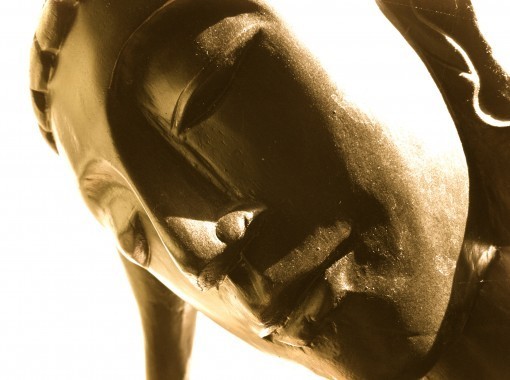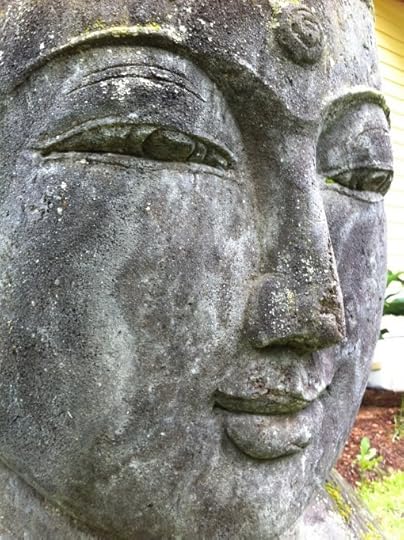Bodhipaksa's Blog, page 77
February 11, 2012
Penn class teaches students how to live like monks
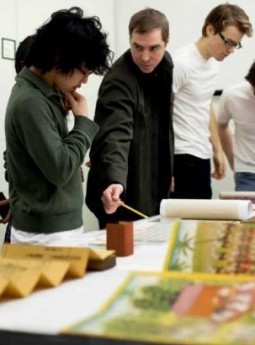 Associate professor Justin McDaniel's religious studies class on monastic life and asceticism gives students at the University of Pennsylvania a firsthand experience of what it's like to be a monk.
Associate professor Justin McDaniel's religious studies class on monastic life and asceticism gives students at the University of Pennsylvania a firsthand experience of what it's like to be a monk.
Students participating in the class are required to observe disciplines drawn from various monastic traditions, including refraining from using any technology other than electric lighting, quitting coffee and alcohol, avoiding physical contact and prolonged eye contact, and eating only unprocessed foods.
Students also have to follow a dress code, with males wearing black shirts and females wearing white shirts, and males and females have to sit on opposite sides of the classroom.
That's not all.
No makeup, jewelry or hair products. Laptops are prohibited; notes can be taken only with paper and pen. And don't even think of checking your cellphone for texts or email.
The disciplines are introduced gradually, but there is a full month of intensive restrictions that begins in mid-March:
Students can only eat food in its natural form; nothing processed. They can't eat when it's dark, nor speak to anyone while they eat. They must be celibate, foregoing even hugs, handshakes and extended eye contact. No technology except for electric light. They can read for other classes, but news from the outside world is forbidden.
Students are required to confess and acknowledge any transgressions of the rules in their class journals.
There are no exams for the class, which is graded entirely on the basis of participation and personal integrity.
Students see many personal benefits flowing from participation in the class.
As a nursing major at the Ivy League school in Philadelphia, [sophomore Madelyn] Keyser [20, of Castro Valley, California] said she hopes the class will help her become more observant and a better listener to her patients.
Students also have to write in a journal every 30 minutes during their waking hours. And required course research cannot be done online — students must consult books and librarians, or have conversations with religious leaders.
Freshman Rachel Eisenberg said she enrolled because it's important "to figure out yourself before you can really help other people."
"It would give me a chance to really listen to myself and focus on my needs and feelings," said Eisenberg, 18, of Miami.
There were 100 applicants for the course, but this was whittled down to 17 students.
McDaniel's course sounds like a fascinating way for students to learn about themselves.
via the Houston Chronicle
America's forgotten Buddhist superhero
From Salon.com:
If you have never heard of the Green Lama … he was an American pulp magazine hero of the 1940s whose superpower was imparted by, of all things, Buddhism. Om mani padme hum: such is the mantra of billionaire playboy Jethro Dumont (best billionaire playboy superhero name ever) when he wants to magically turn into his crime-fighting alter ego, the Green Lama. With his trusty sidekick Tsarong, Dumont/Lama battles evildoers like Willie the Sleeper and the Mad Magi.
Salon's article discusses an exhibit on the Green Lama, among other comic book heroes with a Tibet connection, at the Rubin Museum of Art.
Verizon, taxes, and lobbying
From the Google+ stream of Senator Bernie Sanders.
Related posts:
Right-wing lobbying firms encouraging hooliganism
Why the US is the only industrialized country without universal healthcare
February 10, 2012
Beautiful
I want you to stop being afraid
Of other Americans
Of other religions
Of other classes
Of other nations
Of speaking out.
You're Americans.
Act like it.
If you don't get it, ask an American who does.
Related posts:
Beautiful
Obama's use of complete sentences stirs controversy
So beautiful!
Nature rules
This is a wall on the other side of Main Street from my new office. I guess it was a mill building or factory at one time, but only the base of the wall remains. The faded paint on the sign is covered over with branches and creepers.
Related posts:
Wordless Wednesday 3/26/08
Joss Whedon's Dollhouse, and the nature of reality
Pascal: "The least movement is of importance to all nature."
February 9, 2012
How we use effort to get to a state of effortless meditation
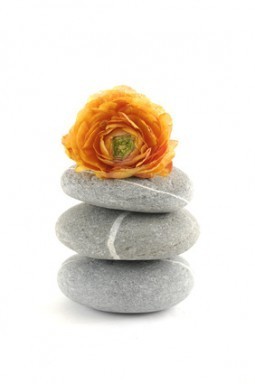 From time to time I'll hear people saying that meditation shouldn't involve effort. For example, Krishnamurti said, "All effort to meditate is the denial of meditation." And I just stumbled upon a website that decried the "arrogance" and "ignorance" of those who say that meditation involves effort, because "Effort is the antithesis of meditation."
From time to time I'll hear people saying that meditation shouldn't involve effort. For example, Krishnamurti said, "All effort to meditate is the denial of meditation." And I just stumbled upon a website that decried the "arrogance" and "ignorance" of those who say that meditation involves effort, because "Effort is the antithesis of meditation."
It's clear, though, when you look at the Buddha's teachings, that he encouraged us to make effort in meditation, and in our lives generally. His last words, in fact, were "With diligence, strive on."
And in my own meditation I find I have to make effort all the time. I have to let go of compulsive thinking, steer my awareness back to the body and the breathing, correct my posture, adjust my attitudes.
One section of the Eightfold Path — one of the Buddha's key teachings — is "Right Effort." Right effort is counted as being part of the meditation (samadhi) section of the path.
Right Effort, in the context of the eightfold path, is seen as one of three pivotal aspects of practice, along with Right View and Right Mindfulness. Every aspect of practice depends upon effort, mindfulness, and view.
Effort, mindfulness, and view are described as three states that "run around and circle" all other practices. For example, if you want to practice Right Speech, you first have to be mindful of your speech. Without mindfulness, there is no possibility of any practice. You also have to have a discriminating awareness (or view) of which speech activities are unskillful and cause suffering, and which are skillful and lead us away from suffering. And then you actually need to make effort to abandon unskillful speech and to cultivate skillful speech. So on every step of the path, effort is involved, along with mindfulness and view.
Right Effort is usually defined in terms of the Four Right Efforts, or Exertions. These are:
The effort to prevent the arising of unskillful qualities that have not yet arisen.
The effort to abandon unskillful qualities that have already arisen.
The effort to cultivate skillful qualities that have not yet arisen.
The effort to maintain and increase to fruition skillful qualities that have arisen
Of course we can make either too much or too little effort. There once was a monk called Sona, who was considering giving up monastic life because his efforts weren't paying off. Just as he was wondering whether he should return to his family, the Buddha appeared to Sona. (This was described as the Buddha "magically" appearing, but I think we could take this as the image of the Buddha appearing in Sona's mind as he debated with himself.) The (imagined) Buddha asked Sona:
"Before, when you were a house-dweller, were you skilled at playing the lute?"
Sona of course replied that he had.
The (imagined) Buddha went on:
"And what do you think: when the strings of your lute were too taut, was your lute in tune and playable?"
"No, lord," replied Sona.
"And what do you think: when the strings of your lute were too loose, was your lute in tune and playable?"
"No, lord."
"And what do you think: when the strings of your lute were neither too taut nor too loose, but tuned to be right on pitch, was your lute in tune and playable? … In the same way, Sona, over-aroused persistence leads to restlessness, overly slack persistence leads to laziness. Thus you should find the right pitch for your energy, attune the pitch of your faculties, and thus begin your reflections."
How do we know when, like Sona, we're making too much or too little effort? The thing is that for our effort to be "right" effort it needs to be combined with mindfulness and right view. Mindfulness allows us to notice what the results of our efforts are, which right view lets us know whether those efforts are helpful or unhelpful, and whether we're making the right kind of effort.
For example, if your mind lacks mindfulness, and you're simply drifting, lost in thought, then you're not exerting enough effort. If you're feeling a sense of despair about your practice, then you also probably don't have enough effort. If you're getting tense and uptight, then you're making too much effort. If you're in a state of elation and aren't very sensitive and kind to others, then you're probably making too much effort. If you're giving yourself a hard time, you're trying too hard. It's our mindfulness and our "view" that let us know what's going on and whether it's helpful.
You need to keep noticing what's happening around your effort; what's happening as a result of your effort. When we do that, our effort is more likely to be balanced.
The word "effort" and the related word "work" sometimes give the wrong idea. We can think of work and effort as being joyless activities. So when I talk about working in meditation, and putting effort into our practice, I like to flank the words "work" or "effort" with the terms "rest" and "play." There needs to be a relaxation of any unnecessary effort — the effort that goes into making the body tense, or that goes into endless thinking, for example. So around our effort there needs to be an attitude of restful, mindful, expansive awareness. And the effort we make should ideally not be forced or unnatural, but light and playful. Meditation can become a joyful exploration: "Where can I go today?"
Yes, there may be times when we have to struggle (to stay awake for example) or have to forcefully restrain ourselves from doing something that we think is grossly unhelpful (for example when we repress the urge to say something unkind) but these should increasingly be unnecessary as we retrain the mind.
Now, it is possible to get to a point in our meditation practice where we don't need to make any effort. The mind clears and becomes still, joy arises, and we're simply present to our experience as it unfolds. The positive factors we've been developing in the mind reach a kind of critical mass and establish themselves stably. It seems that you're not meditating — that your meditation is simply doing itself. It doesn't seem that "you" are doing anything. But to get to that point we need to first put in some effort — usually a lot of effort. On the way to effortlessness in meditation, we find that we generally have to use a subtler and subtler kind of effort. We start to realize that any effort we make creates a kind of disturbance in the mind, and so we refine our effort. One image I love is of catching a feather on a fan; we have to make effort to catch the feather, but if you move too quickly you'll blow the feather away. But we still have to make an effort — at least for a while.
As Shunryu Suzuki said, "Strictly speaking, any effort we make is not good for our practice because it creates waves in our mind. It is impossible, however, to attain absolute calmness of our mind without any effort."
It's not really possible to short-cut this process, and jump straight to effortless meditation. Eventually we get to the point in meditation where effort is in fact unnecessary, but to get there we need to use an effort that is balanced, mindful, and, where possible, playful.
"Thousands of candles can be lighted from a single candle, and the life of the single candle will not be shortened."
Someone on Facebook asked me about this one today. It's not a genuine saying of the Buddha's.
It's from a Japanese book on Buddhism called "The Teaching of Buddha." This book does contain translations of Buddhist sutras, but it also inlcludes a lot of explanatory commentary, of which this is a part.
A fuller version reads:
"An act to make another happy, inspires the other to make still another happy, and so happiness is aroused and abounds. Thousands of candles can be lighted from a single candle, and the life of the single candle will not be shortened. Happiness never decreases by being shared. Those who seek Enlightenment must be careful of each of their steps. No matter how high one's aspiration may be, it must be attained step by step. The steps of the path to Enlightenment must be taken in our everyday life."
It's possible that the quote appeared with the attribution "The Teaching of Buddha," with this then being misinterpreted to mean that it was the word of the Buddha. Several well-known Fake BUddha Quotes originate in this book.
There's nothing at all unBuddhist about this quote. Often when I tell people that their Buddha quote is not in fact a Buddha quote they get rather annoyed and think that I'm denying the message conveyed by the quote, but whether a quote is true is separate from whether it's correctly attributed.
The Buddha did talk about lamps (I don't know about candles) and said things like:
"Just as an oil lamp burns in dependence on oil & wick; and from the termination of the oil & wick — and from not being provided any other sustenance — it goes out unnourished; in the same way, when sensing a feeling limited to the body, he discerns that 'I am sensing a feeling limited to the body.' When sensing a feeling limited to life, he discerns that 'I am sensing a feeling limited to life.' He discerns that 'With the break-up of the body, after the termination of life, all that is sensed, not being relished, will grow cold right here.'"
As you can see, this isn't very pithy or quotable!
A bit more quotable is:
As a flame overthrown by the force of the wind goes to an end that cannot be classified, so the sage free from naming activity goes to an end that cannot be classified.
But then this is rather hard to comprehend.
A later teaching — the Questions of King Milinda, has a similar analogy in reference not to happiness but to the teaching of rebirth:
The king asked: "Venerable Nagasena, is it so that one does not transmigrate and [yet] one is reborn?"
"Yes, your majesty, one does not transmigrate and one is reborn."
"How, venerable Nagasena, is it that one does not transmigrate and one is reborn? Give me an analogy."
"Just as, your majesty, if someone kindled one lamp from another, is it indeed so, your majesty, that the lamp would transmigrate from the other lamp?"
"Certainly not, venerable sir."
"Indeed just so, your majesty, one does not transmigrate and one is reborn."
This isn't the Buddha speaking, but it's the closest I've found to "Thousands of candles can be lighted from a single candle, and the life of the single candle will not be shortened."
Related posts:
Fake Buddha Quote: A generous heart, kind speech, and a life of service and compassion are the things that renew humanity.
My life in bullet-points (again)
Fake Buddha quote: "We're the same as plants, trees, other people, the rain that falls. We consist of that [which] is around us, we're the same as everything.'
February 8, 2012
Retreat opportunity with Bodhipaksa: "Becoming a Spiritual Rebel"
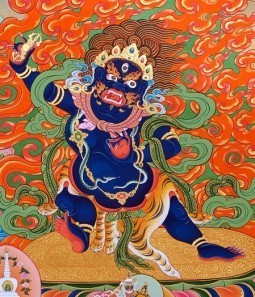 What are we looking for? What gives our lives a sense of meaning? How can we find a sense of confidence in a world marked by change? In the Noble Quest sutta from the Middle Length Sayings, the Buddha offers a first-person guide to the pursuit of a meaningful life. Drawing on his own life story, he beautifully outlines the creative spiritual restlessness that drove him to reject any goal short of complete awakening.
What are we looking for? What gives our lives a sense of meaning? How can we find a sense of confidence in a world marked by change? In the Noble Quest sutta from the Middle Length Sayings, the Buddha offers a first-person guide to the pursuit of a meaningful life. Drawing on his own life story, he beautifully outlines the creative spiritual restlessness that drove him to reject any goal short of complete awakening.
On this weekend led by Bodhipaksa, through study, discussion, personal exploration, and meditation, we'll explore the Buddha's teaching on attaining the sorrowless state and get in touch with the spiritual rebel within.
Bodhipaksa has been a member of the Triratna Buddhist Order since 1993 and a practicing Buddhist since 1982.
Where? Aryaloka Buddhist Center, Newmarket NH 03857
When? 7PM Friday, March 30, 2012 — 2PM Sunday, April 1, 2012
How to book? Visit the registration page for the event.
Why? Because you want to take the red pill and see how deep the rabbit hole goes.
Head of reclining Buddha, Aryaloka Buddhist Center
[Click on the image for a larger version.]
This Buddha statue reclines gracefully on the ledge of one of the windows in the "yoga room" (it's called that, although there's hardly ever any yoga done there) below the shrineroom at Aryaloka Buddhist Center in Newmarket, NH.
February 3, 2012
Rhinebeck Buddha Head
A large stone Buddha head I photographed while I was leading a workshop at the Omega Institute in Rhinebeck, NY.





